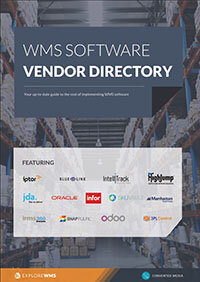What is 'smart warehousing', and what can it do for you?
At its heart, warehousing is very simple: identify and receive things, count them correctly, store them and remember where they are, pick the right amount, and ship them to the right place. However, we perform these basic functions in a time when operations are anything but simple.
Increasing operational complexity calls for smart solutions. One facet of a smart warehouse involves the adoption of technology at appropriate times for appropriate uses. That may refer to the Internet of Things (IoT), in which networked devices use information to improve or make some tasks more convenient, e.g., lighting management, environmental controls or monitoring a given status or data point. The other facet of a smart warehouse is through adoption of more comprehensive and feature-rich software applications that drive performance and efficiency in operations.
The ‘smart warehouse’ approach
Smart warehouses approach their operations as a series of interconnected operations, processes and resources, each deserving attention and critical examination to promote efficiency, with the goal of lowering time and cost to perform. They also understand that the hand-off between each process provides both opportunities and challenges.
Understand your key warehousing needs with this WMS requirements template
With that in mind, visibility and applicability of data and information enables smart warehousing. The fundamentals of what must happen in a warehouse are very simple – but the scale, the volume of transactions, and the complexity of exactly how those simple things happen have created today’s technology-enabled warehouse environment. Modern warehouse management systems not only perform the fundamentals but also optimise tasks and operations and collect, sort, and visualise the electronic information needed to achieve and quantify improvements.
That said, not all organizations who invest in new technology are willing or able to leverage every feature and improvement in that technology and the warehouse must use whichever tools they’ve selected to make them smarter, smartly.
What smart warehouses can do for you
A smart warehouse where the management and staff are using their technology to the full will run less expensively; labour will be tightly controlled, informed and efficient with high quality data driving continuous improvements.
With affordable labour already in short supply and potentially more so as Britain prepares to leave the EU, the next big opportunity is to employ light robotics solutions to support improvement in the most labour intensive warehouse operations. Some of the very real and very impressive advances in affordable autonomous vehicles are providing for solutions somewhere between advanced RF-driven, labour intensive operations, and the multi-million pound complete automation of a facility. WMS companies and robotics manufacturers are racing to find and develop the right offering at the right price.
By Gavin Clark, Commercial Director, Snapfulfil
Free white paper

WMS requirements template
Over 120 WMS feature ideas to help you build a requirements list and shortlist vendors

Featured white papers
Related articles
-

Warehouse picking and packing processes: how much labor do you need?
Logiwa's Erhan Musaoglu shows you how to calculate picking and packing labor requirements for you...
-

Mission-critical features of food lot traceability software
What features of food traceability software will help you during a food recall
-

Five key stakeholders in your WMS selection process
The stakeholders you will need on board for your WMS selection project, and what they can offer



